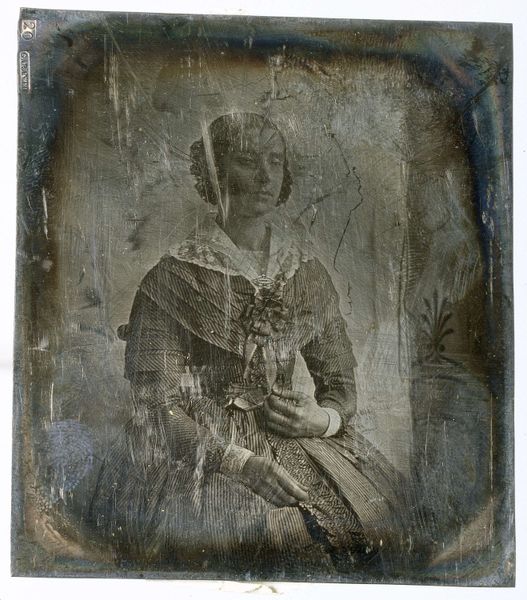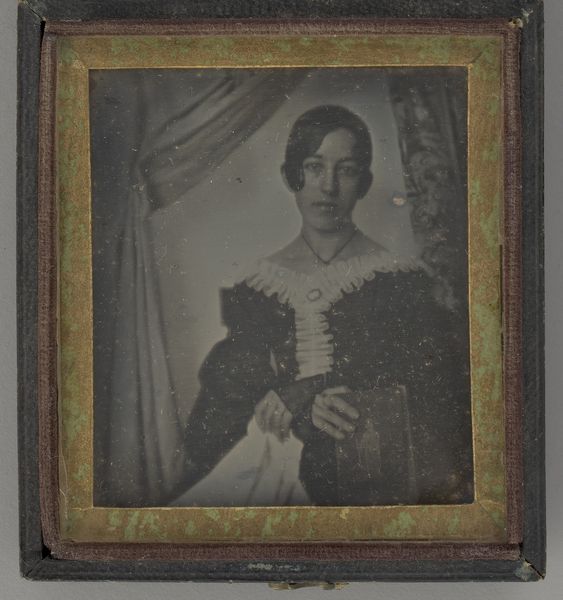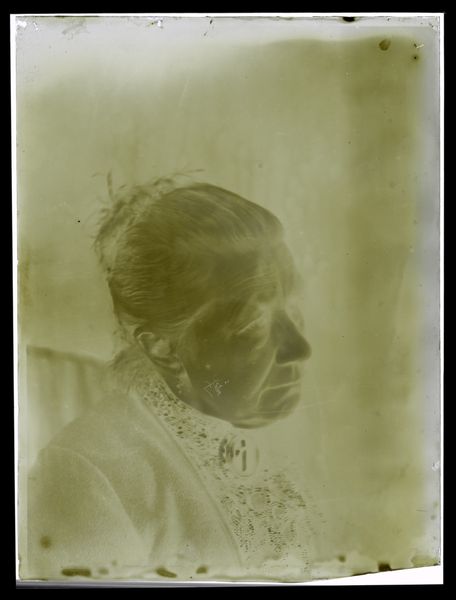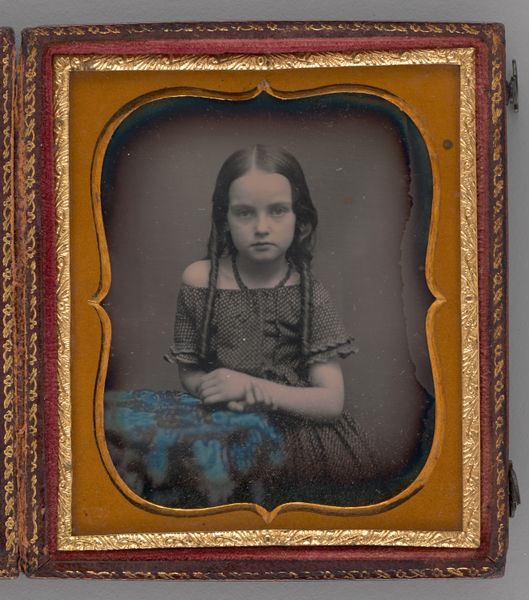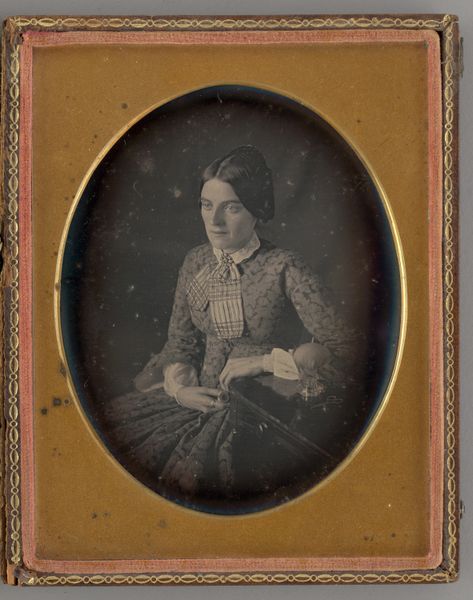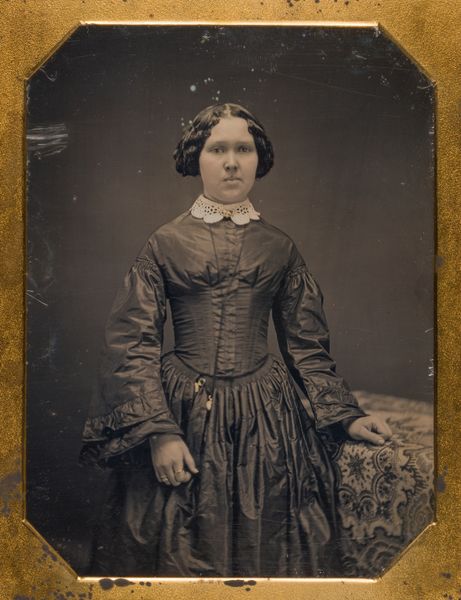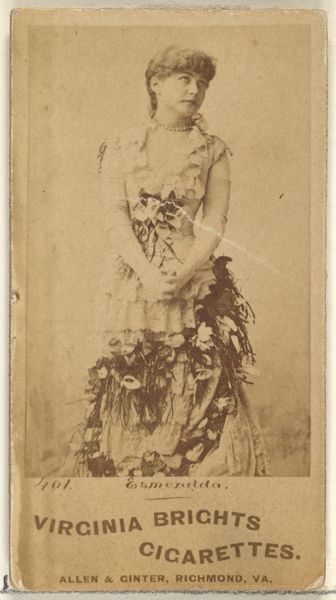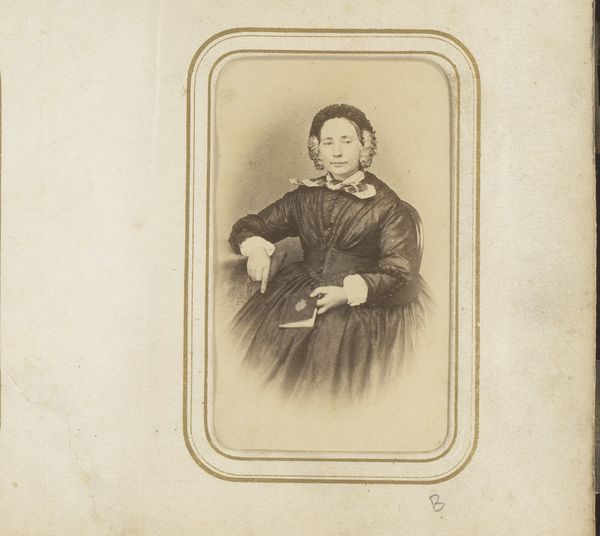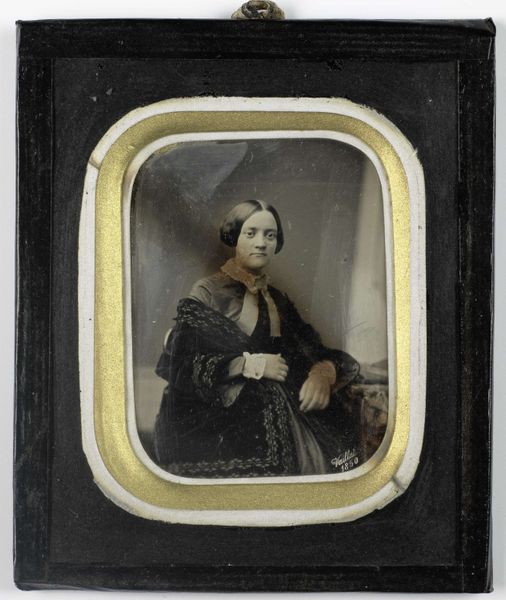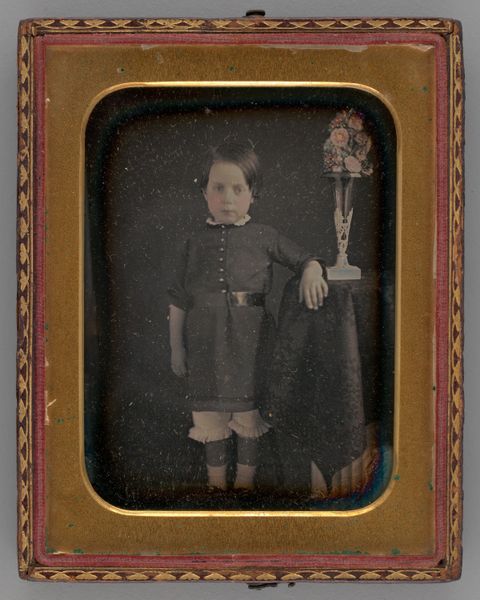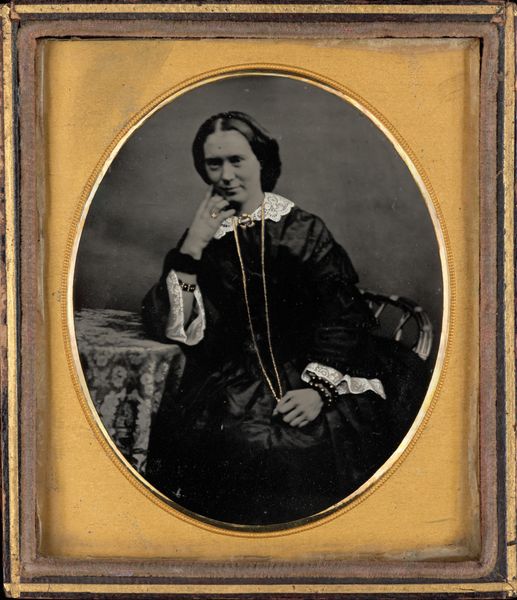![[Young Woman Holding a Flower] by Joseph-Philibert Girault de Prangey](/_next/image?url=https%3A%2F%2Fd2w8kbdekdi1gv.cloudfront.net%2FeyJidWNrZXQiOiAiYXJ0ZXJhLWltYWdlcy1idWNrZXQiLCAia2V5IjogImFydHdvcmtzLzg3MmQ1NWEyLTQwNmMtNDhiOC1hNGYyLTdhMGEwNTI1YmU3MS84NzJkNTVhMi00MDZjLTQ4YjgtYTRmMi03YTBhMDUyNWJlNzFfZnVsbC5qcGciLCAiZWRpdHMiOiB7InJlc2l6ZSI6IHsid2lkdGgiOiAxOTIwLCAiaGVpZ2h0IjogMTkyMCwgImZpdCI6ICJpbnNpZGUifX19&w=3840&q=75)
[Young Woman Holding a Flower] 1837 - 1847
0:00
0:00
daguerreotype, photography
#
portrait
#
daguerreotype
#
photography
#
romanticism
#
mixed media
Dimensions: Image: 4 1/2 × 3 1/2 in. (11.4 × 8.9 cm) Overall with mounting: 5 7/8 × 4 3/4 × 5/16 in. (15 × 12 × 0.8 cm)
Copyright: Public Domain
Editor: So this is *Young Woman Holding a Flower*, a daguerreotype by Joseph-Philibert Girault de Prangey, created sometime between 1837 and 1847. The sitter's gaze is very intense and there’s an overall somber mood. As one of the earliest forms of photography, how does this fit into the social and cultural landscape of the time? Curator: It’s fascinating to consider the implications of early photography like this, particularly portraiture, for society. Before this, portraits were largely limited to the elite. The daguerreotype democratized image-making, giving a wider range of people the opportunity to have their likeness recorded. Editor: That’s an interesting point. Was there resistance or anxiety surrounding this new medium? Curator: Absolutely. Photography’s rise coincided with growing concerns about industrialization and mass production. Artists and critics worried about its impact on traditional artistic skills, with some viewing it as a mechanical process devoid of artistic merit. There was also the question of who controlled these images and how they were used, raising issues of privacy and representation. What else strikes you about this work? Editor: The directness of the gaze. I wonder, given the rigid poses often required by long exposure times, how much control the sitter had over their own image and its reception? Curator: Exactly. Who got to be photographed and how they were portrayed became part of a larger social and political conversation. Examining such an image now, we can discuss not only the individual, but also the developing visual culture of the 19th century and the complex relationships between technology, art, and power. Editor: It really shifts the way I see this piece now – from just a portrait to a statement about representation. Curator: And it shows how looking at art through a historical lens reveals more than just the aesthetic, but the cultural values that shape our world.
Comments
No comments
Be the first to comment and join the conversation on the ultimate creative platform.
